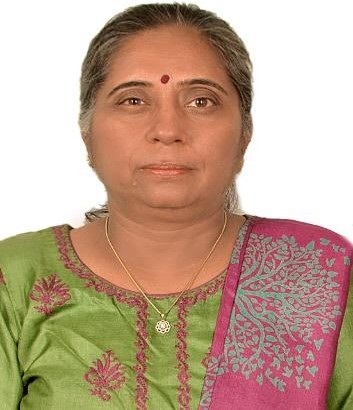The feed industry uses diverse raw materials such as grains including maize, sorghum; de-oiled cakes, oil meals etc mainly derived from soybean. Soymeal is the most common and nutritious among all the oil meals used in the country in animal feed as the source of protein. Previously, soymeal was traditionally preferred by the farmers and the feed manufacturers as one of the key ingredients in the feed for cattle and other livestock; but currently, due to surge in Soybean Meal prices, due to demand -supply fluctuations, CLFMA felt the need to organize a Webinar on the topic “Current Soybean Outlook & Future Opportunities” which was conducted on 27th November, 2021.
The Webinar was started by Ms. Chandrika Venkatesh, Executive Director of CLFMA OF INDIA, she introduced Mr. Neeraj Kumar Srivastava, Chairman CLFMA to the audience.

CLFMA Chairman, Mr. Neeraj Kumar Srivastava delivered the Welcome Address and discussed about the soymeal situation for the previous and current year. He said that in the year 2020-21, the industry suffered a lot due to unexpected price rise due to speculative trading. He added that, we had good expectations for the market to get stabilized after the new crop, but unfortunately the prices have jacked up again and since this is a very sensitive matter for the industry, we thought it’s prudent to deliberate this issue and he said that, we are working very closely on these issues with the government and other associations as well to tackle them.
He said that the webinar was organized with the following two objectives:
- To create awareness about the current soymeal situation and the steps CLFMA has taken to confront this issue presently and in the future
- To educate the participants about the Genetically Modified Crops and its myths
He then introduced the two speakers to the audience:

Dr. Vibha Ahuja, Ph.D. (Microbiology) serves as Chief General Manager of Biotech Consortium India Ltd. She is based in New Delhi, India. She is an expert on biosafety and regulatory aspects, particularly with reference to genetically modified organisms, having more than 25 years of experience in the field.

Ms. Prerana Desai, Head of Research, Samunnati Agri. She has a vast experience of commodity research of more than 25 years. She specializes in Agri Commodity Research. As a part of her vast experience, she has done commodity research for various value chain participants like manufacturer, trader, exchange, commodity broker, NBFC and now farmers.
Session 1:
Dr. Vibha Ahuja, Chief General Manager of Biotech Consortium India Limited gave a presentation on “Use of GM crops and derivatives for animal feed: Status and opportunities” and explained in detail on following points:
- What are GM crops?
- Global and Indian status.
- Biosafety assessment and regulations.
- GM crops/derivatives used as animal feed.
- Myths/Facts and Way forward.
For further details the video and the presentation are uploaded for the members to view the same
Link : Video https://youtu.be/CNRQ52e5cG4
Link : Presentation https://drive.google.com/file/d/18CamRExT5UrV2eeqPVhPWtJ43- bzjMyu/view?usp=sharing
https://drive.google.com/file/d/1WnVYh7k2I76tPr6Nep0DFKBe2nD5iQYx/view?usp= sharing
Session 2:
Ms. Prerana Desai, Head of Research, Samunnati Agri gave a presentation on the topic
“Outlook of Soybean for the Current & Future Opportunities”.
- Crop Tour Coverage, area covered MP, Maharashtra, Rajasthan for acreage & yield assessment?
- Overall rainfall status over soyabean regions in our Country
- Soybean output – SamAgr Survey
- State-wise Production Outlook – Soyabean
- Arrivals – Approx. 20% of soybean crop already arrived in the market. Farmers holding soybean in anticipation of higher prices Biosafety assessment and regulations.
- Soybean, Soy Meal & Soy Oil Balance Sheet
- Soybean Price Movement
- Pictorial Slide of Soybean Harvesting / Drying, etc.
For further details the video and the presentation are uploaded for the members to view the same
Link : Video https://youtu.be/CNRQ52e5cG4
Link : Presentation https://drive.google.com/file/d/18CamRExT5UrV2eeqPVhPWtJ43- bzjMyu/view?usp=sharing
https://drive.google.com/file/d/1WnVYh7k2I76tPr6Nep0DFKBe2nD5iQYx/view?usp= sharing

After completion of presentation by Ms. Prerana Desai, forum was opened for the Q&A Session.
The following few questions answered by Members / Participants are given below. The rest of the questions and answers can be referred from the video link given below:
- Dr. Devender Hooda to Ms. Prerana Desai – When the productivity is going up Pan- India by 16%, what are factors by which Madhya Pradesh Productivity has gone up by 31%? What are the crops? then in such case on an average every farmer should get 31% higher yield, please explain.
- As compared to last year, how this year Soyabean crushing will be lesser in India?
- As you stated that you are expecting double the amount of soyabean meal import this year. Of course, that import is highly policy driven so expecting that has happen to again. I think is a big question mark. So, these are the three assumptions, which actually I am not able to understand?
Ms. Prerana Desai explained Dr. Hooda and participants what is the yield scenario in detail.
Ms. Prerana Desai explained the other question, that was regarding imports are assumed to be very high. In fact, in this balance sheet, imports are taken very conservatively, which is 4 lakh ton. There will be around 8 lakh ton of meal imports. The lower crush is largely because of 6 to 8 lakh ton of meal ready for consumption, the crush parity will only not come for the crushers, to crush their meal and because of the higher meal imports, the consumption of the meal is rising, the consumption is not going down. The crush that is going down is because of the 6-8 tons of meal that we are importing.
Dr. Hooda said that if that is the case, we could not predict 31%, jump in productivity, this year I agree. But how it is possible that the whole Industry and all the predictors could not predict last year 25% less production in that case?
Ms. Prerana Desai explained that, last year was the Covid year. Hence field survey was not carried out and that is why things went bad , nobody could really know how bad the crop situation was, the other thing was that last year the fiasco also happened because we ended up exporting very large amount of meal in the first half because there was no
clarity on the total production and the exports went out so aggressively in the first half and the second half we were actually left empty handed.
The other CLFMA Member Mr. Rakshith asked a question to Dr. Vibha Ahuja as we have been seeing a large hue and cry from Farmer Community for this GM Crop. Apart from Cotton, we are not seeing any progress in any other crops, why it is so?
Mr. Rakshith asked one more comment on that on-GM Crops farmer community is being protesting like they lose their basic sovereign right for retaining the seeds if they use GM Crops.
Dr. Vibha answered second question first. She explained that genetic modification is just to insert a character so you know this has happened because again in cotton, the varieties, which are used are hybrids, so hybrids are one, which have to be purchased every year by the farmer whether it is GM or Non-GM. The Government does not make it compulsory to buy every year. Suppose we have tomorrow GM Soyabean and it is put in the varieties, then GM Soyabean also can be retained. If the gene put in the variety, you don’t have to buy, you can save some part of it, although in reality the practise in many hybrid crops, is that even in the varieties people go and purchase, because of the better quality and purity of the seed but genetic modification has nothing to do with. It will be in the same way as it is done for the conventional crop. This is a myth, misinformation to the farmers. In our country cotton almost 98% is hybrid which are grown. Hybrids have to be purchased every year. She answered the other question why we did not have any other crop? After BT cotton it is again debates, myths and so on. And because of these polarized debates, the government has not taken decision, there has been a delay in the decision, and subsequently it has resulted in slowing down of the Research, introducing new Products and so on.
Mr. Rakshith asked one more question that there is very less human consumption of Soybean and its being largely used in poultry production in Poultry feed making. So, can we, body like CLFMA can take aggressive step and push forward for the Soya GM production in India.
Dr. Vibha answered that present scenario is almost 80% of the Soybean around the world is Genetically Modified Soyabean. All the Soyabean Oil being imported in the Country is derived from the Genetically Modified Soyabean. So why not in our Country we should grow GM Soyabean in our Country and get the productivity increased. There should be intensive Research on new variety and it should be developed in our Country also, that we don’t have to go out.
CLFMA Chairman Mr. Neeraj Kumar Srivastava asked one more question received from the participant for Ms. Prerana. Ms. Prerana, you have projected that gist of crushing for this financial year so is it going to impact the availability of the meal and price? How do you see the forecast of soybean meal going forward in this financial year?
Ms. Prerana answered the question that, as you know lower crush is largely because of the meal import. Another thing that I have assumed is Soyabean meal exports, if Indian prices remain this high and global pries so not rebound, then that export will also not happen the, meal actually add to the overhang of the seed and that will put pressure on soybean and soymeal prices. Just there is one disclaimer over here is just historically that if Indian industry chooses not to crush and carry the Soyabean as an inventory despite the fact that we are not importers of oil and we have such a large consuming unthriving sector so that is one disclaimer but I think that we will not have a problem as far as availability is concerned and I do expect prices to soften as we get closer to Rabi Harvest.
There will be visibility of Mustard, large humongous crop of mustard and that will kind of put pressure on all.
Dr. Shivaji Dey asked a question to Prerana Mam. The farmers are expecting a price of the seed around Rs.7000/- and so farmers holding it back or may be the farmers, or hoarders are hoarding it back and at the same time the plants will definitely not crush due to disparity so in that case and on the other hand we would be forced to allow the import of GM meal. So definitely our usage, for our usage the soyabean meal prices being soften but what happens to the seed which have been hoarded by the farmers? If it is not used by the crusher due to disparity and we have historically seen we don’t carry forward the seed to the next year and neither we hold it as an inventory due to the lack of fund so what happens to the seed in that case? won’t it soften down? and there will be a check and balance in the industry.
Ms. Prerana answered that you are slightly mistaken in believing that we don’t carry soyabean inventory. last 6-7-8 years trend is that we had in couple of years we ended up carrying soyabean inventory of 20 lakhs tons or more. Not necessary by the farmers, but it is the inventory in the system, who is holding is the question. But usually, farmers won’t hold for that long .
Dr. Shivaji Dey said that soya Crushers also don’t hold
Ms. Prerana answered that the system is holding. I mean whoever finds that the prices will make money will be holding soybean. They end up holding, they end up losing money also. Another thing is that farmers were expecting higher prices. They started with expecting Rs.6000/- prices when actually Soyabean fell to around to Rs.5000, very close to Rs.5000. In Interior mandies it fell, for couple of days below Rs.5000 also but as the prices started rising, they wanted more and that is why the next target of Rs.7000 had emerged. I do believe that close to current prices; the selling will start. One more thing she pointed out that globally the third variant of Covid has now emerged and that has resulted in sale of all assets. So, your crude has fallen by over 11% over night and all agriculture commodities have taken lot of waiting and dollar index is now approaching 97 all of this is creating a sort of black swarm kind of an event that we have seen in last 10 years, the global financial meltdown kind of a situation so that also will put pressure on commodities and we should see commodity prices coming down at least in very near term of one month, one or two months, sort of a thing.
Dr. Shivaji Dey asked one more question, what is the MSP of Soyabean Seed, this year? Ms. Prerana answered that Soybean MSP is Rs.39.50.
Dr. Shivaji Dey: So future projection will it be come below MSP or we need to wait?
Ms. Prerana answered I doubt it will come down. I mean like you know it will collapse much faster than the global market then we will end up exporting, which is what my base case scenario is that. Always, off course, global scenario changes dramatically.
Dr. Shivaji Dey said so we should just see a mark of around Rs.5000.
Ms. Prerana answered that I think what the best way would be to stay hand to mouth at higher prices, do not panic and believe that the prices have no limit and it will continue to rise as it happened in the last year and last year is the different year.
Mr. Neeraj asked one more question received from the member, it was very straight forward that they are asking a lot of solutions and things from you that when do you think that prices start going down or soften?
Ms. Prerana answered that Rs.7000 is on horizon for Soybean. Usually, farmers sell whatever they harvest but once that is not sold, they kind of stock it and once they stocked it, they are no hurry to sell.
Mr. Krishna Reddy Tetali asked the question in chat box Can we get these presentations? Will you please forward them? And one more question FSSAI has called for public comments on permitting inclusion of GM ingredients in foods and what is the action taken by CLFMA and CLFMA members in this regard?
Dr. Vibha answered that FSSAI authority put up on the website. The new FSSAI regulations and would also like to share history traditionally as per our rules it is Ministry of Environment. The Genetically modified organisms including crops and health care products but alike health care products these products also regulated by the Drug General of India so the Pharmaceutical Company work very hard, 10 to 15 years back and there was a report and so on. The pharmaceutical products were out of the purview of the Ministry of the Environment and they are only taken care by the Drug Controller General of India so now similarly the GM modified foods. After the Food Safety Act came in to place the Food Safety Authority is expected to look at the GM Foods and approve it in the Ministry of Environment, but Ministry of FSSAI do not have any regulations and they have been working on it several years and finally we have a draft, which has been put up, it was put up on 15th November, it is for 60 days for comments. Now, as far as the CLFMA is concerned, presently, the definition of food does not include the feed and that is why there is little bit of confusion. But we understand that the food is, the definition of food is being modified to include the feed also. The CLFMA should look at the regulations very carefully and see how it is going to impact them and we can have a discussion or wherever you need assistance, I will be available to provide you and clarify various things. The meal kind of products, , the one which we saw, soymeal, canola meal all these are highly processed and whatever interventions we have made that has safely tested it need not be into too much of regulations and there should be flexibility in the market.
Link : Video https://youtu.be/CNRQ52e5cG4

The Webinar ended with the summarization and Vote of Thanks delivered by Mr. Suresh Deora, Hon. Secretary of CLFMA OF INDIA.
Even though the webinar was announced in a short period of time by CLFMA, the Webinar was well appreciated by the Audience. Almost 100 registered for the Webinar and 82 participants attended CLFMA Webinar.